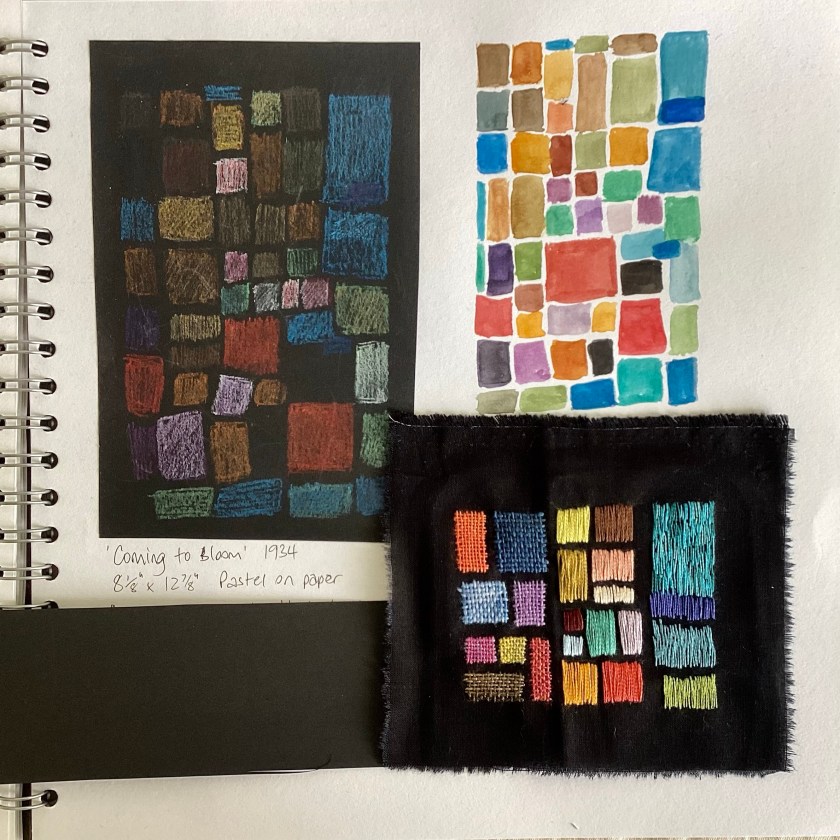I experienced a proper state of what psychologists call flow this morning – utterly absorbed and focused on making these little samples, I somehow lost two hours. I quite like it when that happens. You literally lose yourself in something while time rolls on without you. You come back to reality slightly dazed, feeling a bit like Rip Van Winkle.
I really like this Klee painting, ‘Oceanic Landscape’ (1929) and have been drawing tree shapes with watercolour. I love the simplicity of these shapes – just a few very easy lines that nevertheless unmistakably say ‘tree’

Of course I wanted to see how these would work in fabric and thread. The first sample is layered sheers and silk net on a scrap of very soft brushed cotton.

The second is a scrap of vintage linen/cotton sheet, painted with watercolours and then stitched. You can see the imprint of the embroidery frame which kept the fabric taut just while the paint was drying. I will soak and stretch the creases out at some point.


This sketchbook (so far) is just for me, and just for fun. I’m not sure it’s leading anywhere, although really everything is good practice for something.

I’m having a few days away from the day job next week and am looking forward to a break. I have a strong need to paint – who knows where these directives come from? I think it’s probably important to listen, in any case – so will be on paper for a while. Just to see what happens.

























